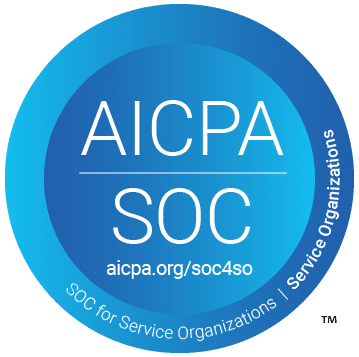From Numbers to Narrative: Using Data to Navigate Order of Selection
In the Room with the Dashboards
Every Monday morning, I sat at the table with my field chief, finance staff, regional directors, and local supervisors. In front of us were dashboards from our case management system, along with visualizations our team had created in Tableau. We examined every line: how we were spending money, which services were making the greatest difference, and which vendors were delivering results.
This wasn’t just about numbers. These meetings were about decisions that would shape the futures of people on our waiting list. The data told us where we stood — but more importantly, it told us where we could go.
That’s the heart of effective Order of Selection (OOS) management: using data from a modern case management system not simply to comply with regulations, but to plan, prioritize, and communicate in a way that brings partners along as allies.
When Demand Outpaces Resources
Many state vocational rehabilitation (VR) agencies are facing significant financial and staffing challenges. The Rehabilitation Act of 1973, as amended, allows agencies to implement OOS when they lack the resources to fully serve all eligible individuals.
The steps for the OOS process must be detailed in the State Plan. Currently, according to the Rehabilitation Services Administration (RSA), 11 state VR programs are in OOS — and based on recent discussions at the Council of State Administrators of Vocational Rehabilitation, that number could climb to over 20. In past decades, as many as half of all VR agencies have been in OOS at the same time.
How Order of Selection Works
Under OOS, vocational rehabilitation agencies create priority groups — typically:
- Most significant disability
- Significant disability
- Non-significant disability
Individuals are placed on a waiting list based on the significance of their disability and the number of barriers they face. Services are offered as resources allow, starting with Priority Group 1. All individuals in one group must be served before the next group can be opened.
While the process seems straightforward on paper, the management of waiting lists, resources, and service priorities is complex — and the key to doing it well lies in how agencies use their data.
Planning Before the Crisis
The best way to manage OOS is to avoid entering it unnecessarily. That requires fiscal forecasting and scenario planning, both of which depend on accurate, timely data available in your case management system.
RSA requires a fiscal forecast with six key components:
- Average cost per person
- Projected number of individualized plans for employment (IPEs)
- Current number of IPEs
- Projected number of applicants
- Potential assessment costs for new applicants
- Projected changes in service costs
This information should be drawn from the case management system — and used proactively to predict trends, identify risks, and explore cost containment strategies such as maximizing comparable benefits or improving vendor performance.
Managing Within an OOS: Lessons from the Field
When I led VR agencies in three different states, data became the single most important management tool we had.
I met weekly with leadership teams to track performance, resource use, and outcomes. We looked at historical data from three to five years prior, as well as real-time trends. We studied every person we took off the waiting list:
- Did they move into an IPE?
- What were the projected costs for their services?
- Did we actually spend that amount over time?
One surprising finding: if people waited a year, only about 10% actually moved into a plan. For those who waited six months, fewer than half progressed. The longer we stayed in OOS, the fewer applications and referrals we received. And when we exited OOS, there was hesitancy — people worried services might not be available again.
These insights shaped our strategy. They also reinforced the need for continuous communication with staff, partners, and the public. Data wasn’t just for internal review — it was for building trust.
The Hidden Impacts
OOS affects more than service timelines — it can reshape community behavior. Long waits discourage both applicants and referral sources, reducing overall demand. This means that even when an agency has the resources to reopen categories, it must rebuild confidence in the system.
This is where visualized data becomes powerful. Dashboards, charts, and trend lines created in the vocational rehabilitation case management system can show progress toward reopening and demonstrate that resources are stable. They help shift the conversation from frustration to partnership.
Exiting OOS with Partnership
Decisions to exit OOS should be based on more than optimism — they require evidence. RSA advises agencies to use fiscal forecasting to determine whether they can:
- Continue serving all individuals already in IPEs
- Assess all expected applicants over the next year
- Serve all individuals expected to be determined eligible
- Meet all program requirements, including the 15% reserve for Pre-ETS
When we shared this data openly — with our staff, State Rehabilitation Council, community providers, and workforce partners — people began to see themselves as part of the solution. Legislators, vendors, and even RSA staff responded more positively when they could see the story in numbers.
From Numbers to Narrative
Ultimately, managing OOS well is about telling the right story, grounded in credible data. Dashboards and reports are not just internal management tools — they are bridges between compliance requirements and human impact.
Every data point represents a person waiting for an opportunity. Every visualization is a way to make the stakes real for those who control the resources.
When stakeholders understand the data and see progress, they are more likely to collaborate. That collaboration can shorten wait times, improve service quality, and move an agency from OOS back to fully open services.
Conclusion: Data as the Bridge Between Compliance and Compassion
Order of Selection is, at its core, a balancing act between limited resources and the mission to serve. A strong case management system allows vocational rehabilitation agencies to look back historically, manage in real time, and forecast the future.
But the true power of data lies in its ability to tell a story that brings people together. When data is shared widely, communicated clearly, and connected to the lives it represents, OOS becomes less about limits — and more about possibilities.
*I want to thank this week’s co-contributor, Sandy Williams. She is the Customer Service Manager at Alliance Enterprises and has more than 30 years’ experience in public vocational rehabilitation.
This blog was created with editing assistance from ChatGPT.



